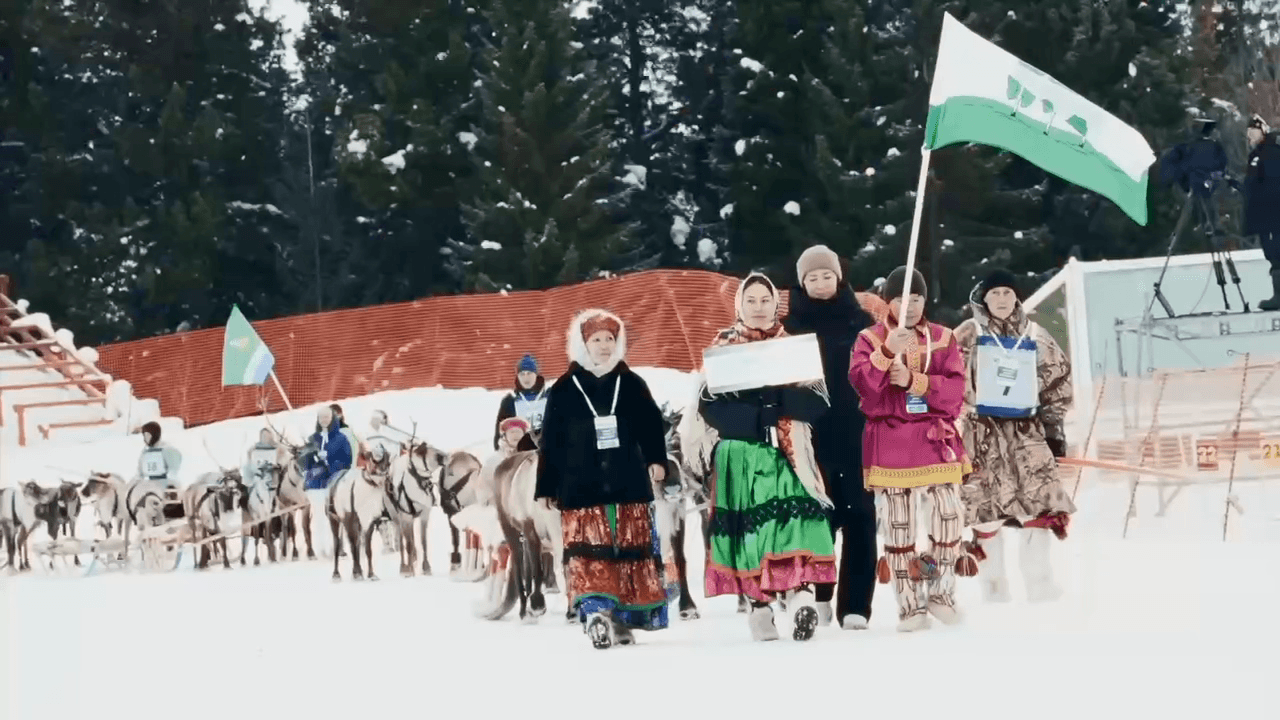
A fisherman with a spear. Mansi, Sverdlovsk Region, Verkhotursky District, 1908. Author: I. K. Zelenov. Photo from the album "The Kunstkamera Archive: Rites, Daily Life, and Faces of Ancestors in Old Photographs” Mansi is a small Finno-Ugric people in Russia, the indigenous population of the Khanty-Mansi Autonomous Okrug — Yugra. They speak the Mansi language. They are the closest linguistic relatives of the Khanty, and they are also related to the Hungarians. Mansi belong to the Uralic race. The total population is 12,228 people (according to the 2021 census). About 200 Mansi people live in the north of the Sverdlovsk Region. A few live in the northeast of the Perm Region (the Vishersky State Nature Reserve). The combined name of the Mansi and the closely related Khanty people is the Ob Ugra. It is believed that the Mansi ethnos emerged as a result of the fusion of local Neolithic tribes, as well as Ugric and Indo-Iranian tribes that migrated from the south through the steppes and forest-steppes of Western Siberia and Northern Kazakhstan[19]. The two-component nature of the Mansi culture (a combination of taiga hunter-fisherfolk and steppe nomadic pastoralists) has persisted to the present day. In the early Middle Ages, the Mansi-related ancestors of the Hungarians (the Kushnarenkovskaya culture) migrated to the Danube. The Mansi people are associated with the Yudin culture. The Mansi are Orthodox Christians, but they also practice traditional shamanism, the cult of patron spirits, ancestors, and the bear (bear festivals). The Mansi have a rich folklore and mythology. The Mansi are divided into two exogamous phratries: Por and Mos, which have different origins and customs. Marriages were only allowed between members of the opposite phratries: Mos men married Por women, and vice versa. The ancestor of the Por phratry is the bear, and the ancestor of the Mos phratry is the woman Kaltash, who could appear as a goose, a hare, or a butterfly. In the folk art of the Mansi, the main focus is on ornamentation, which is similar to that of the related Khanty and Selkup peoples. These include geometric shapes such as deer antlers, diamonds, wavy lines, meanders similar to the Greek pattern, and zigzag lines, often arranged in a strip-like pattern. Among the bronze casting, images of animals, such as eagles and bears, are more common. The traditional occupations of the Mansi include hunting, fishing, reindeer herding, farming, and cattle breeding. Fishing is common on the Ob and the Northern Sosva. In the upper reaches of the Lozva, Lyapina, and Northern Sosva, reindeer herding was adopted from the Khanty in the 13th and 14th centuries. Farming was adopted from the Russians in the 16th and 17th centuries. The most developed areas of livestock farming among the Mansi include the breeding of horses, as well as cattle and small livestock. In addition, poultry farming was developed. The commercial fish included grayling, bream, pike, roach, burbot, crucian carp, sturgeon, sterlet, nelma, muksun, shchokur, pyzhyan, and syrk, and the Northern Sosva was also home to freshwater herring, a gourmet delicacy. Fishing tools included spears and nets. Fish were also caught by damming streams. The Siberian cedar was of great importance in the everyday life of the Mansi, who harvested a huge crop of cedar nuts. In addition, household items such as dishes, boxes, and baskets (known as "kornevatiki") were made from woven cedar roots. Beresta products, such as boxes, tubs, wooden dishes, spoons, troughs, and ladles, as well as simple furniture, were also widely used. Pottery items were also employed. In ancient times, the Mansi used dugout boats, skis, and sleds (with dog, reindeer, or horse teams) for transportation. They also used bows and arrows, spears, and various types of blades as weapons. For hunting, they employed various traps (chirkans) and crossbows. Women's clothing consisted of a dress, a loose-fitting robe made of cloth or satin, a double deer fur coat (yagushka or sak), a headscarf, and a large amount of jewelry (rings, beaded necklaces, etc.).Men wore trousers and a shirt, a hooded coat made of cloth, or a deer skin coat (malitsa or gus) for reindeer herders, or a hooded coat with unsewn sides (luzan). Food: fish, meat (dried, dried-out, fried, frozen), berries. Mushrooms were not consumed, as they were believed to summon evil spirits.
Post: 16 August 07:41

